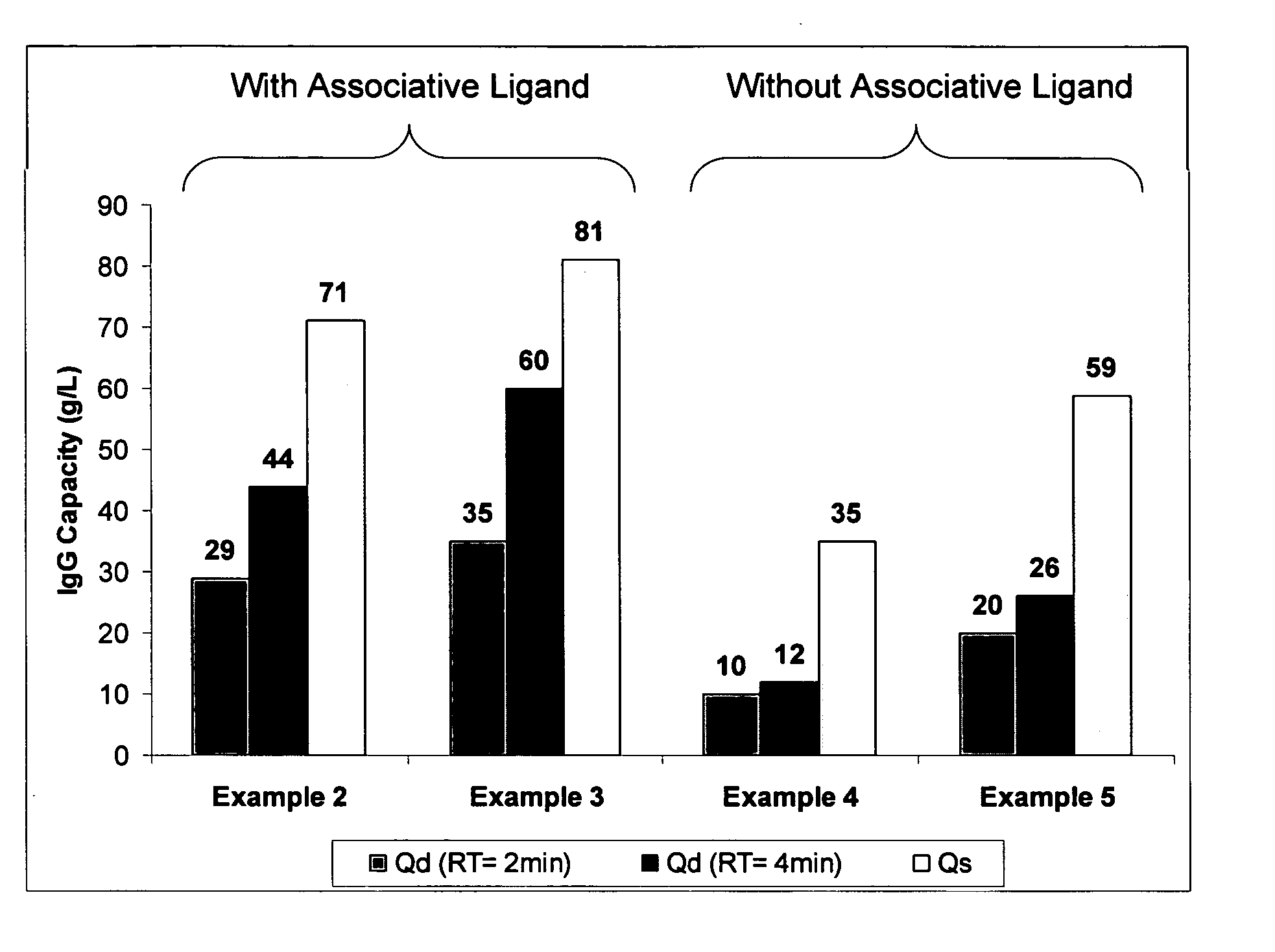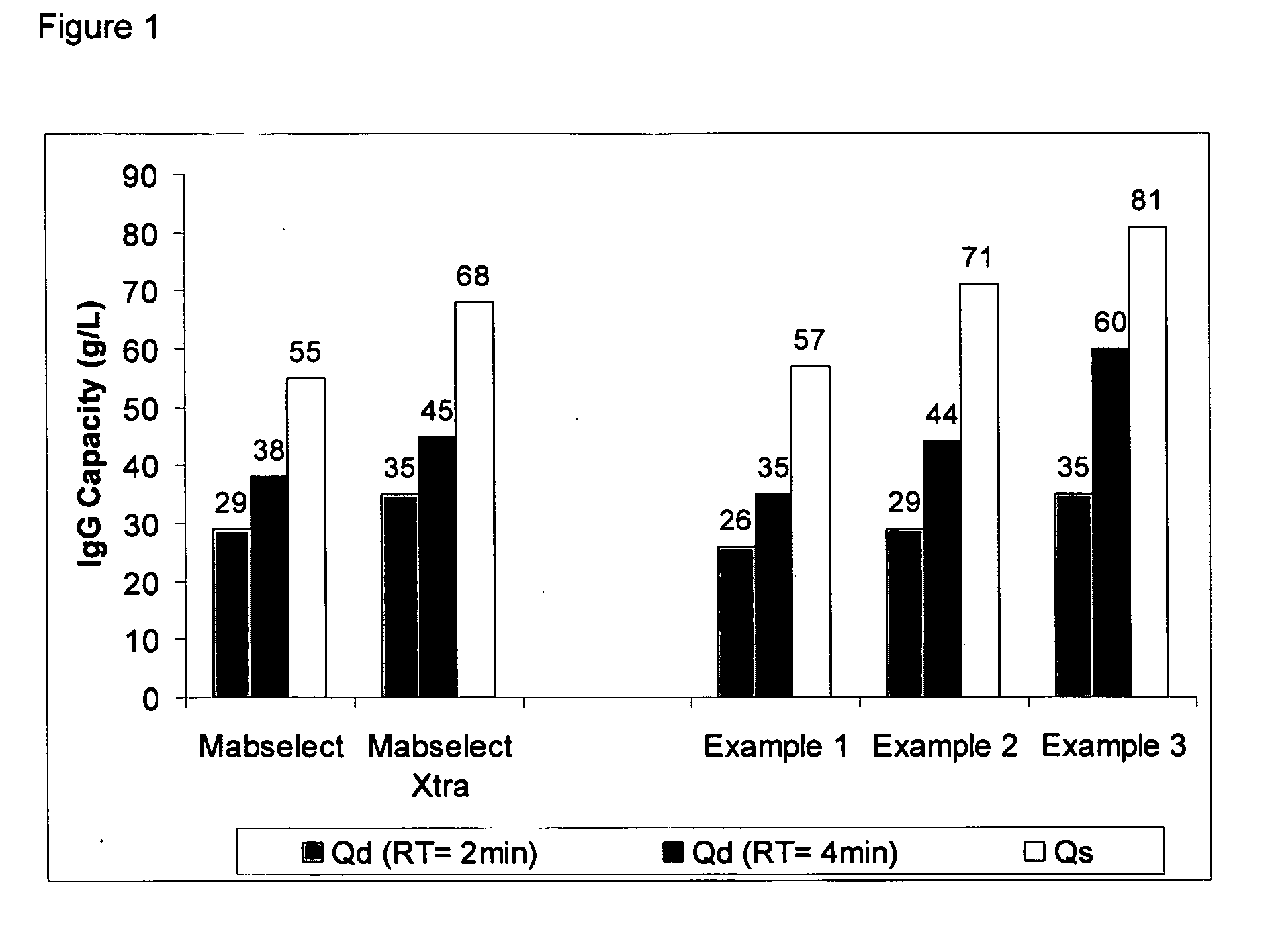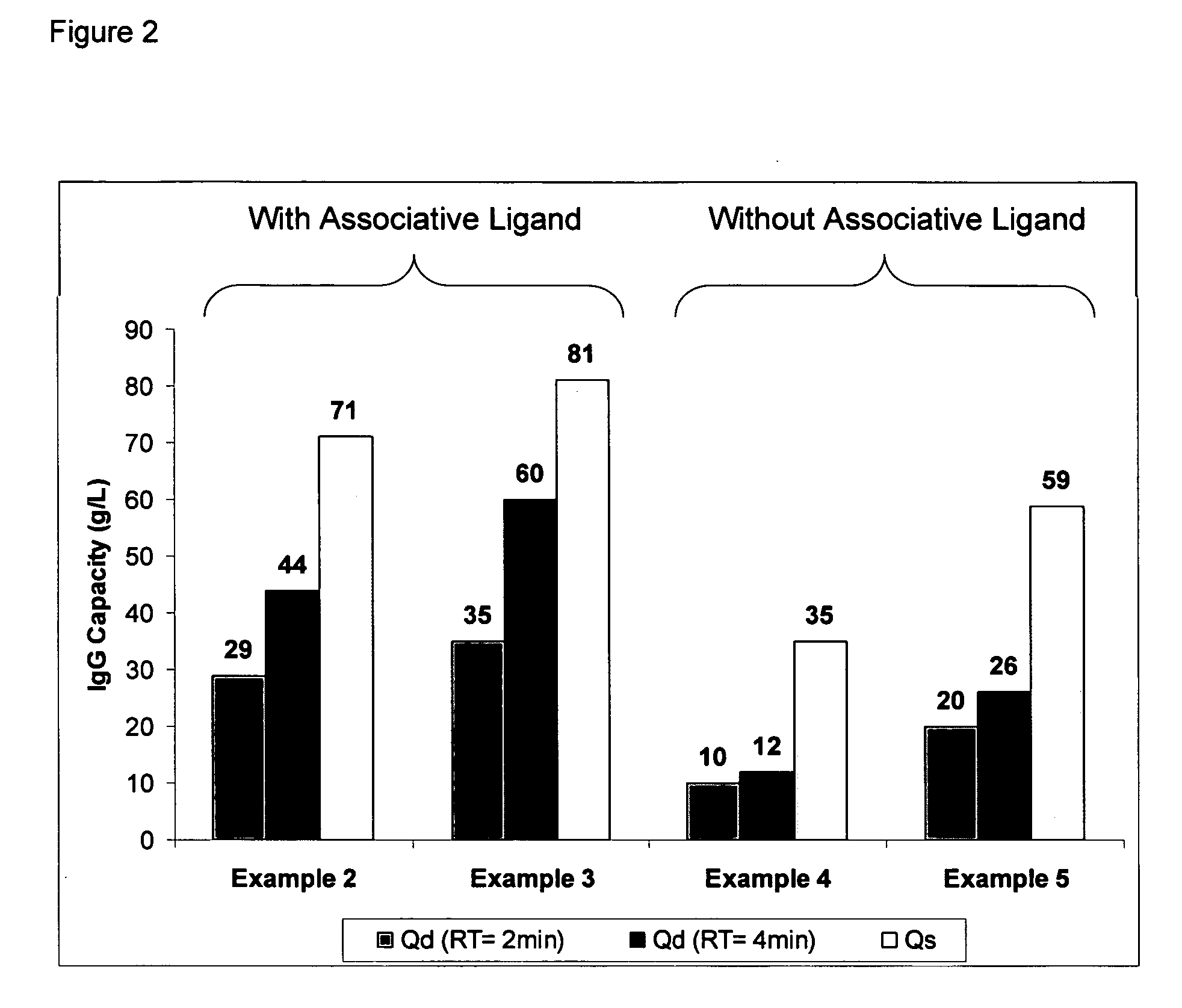Affinity chromatography matrices and methods of making and using the same
a technology of affinity chromatography and affigel matrix, which is applied in the field of affinity chromatography, can solve the problems of time-consuming and expensive, affigel matrix properties, and other such ligands created by linker assisted coupling, and achieve the effects of affigel matrix, and reducing the cost of affigel matrix
- Summary
- Abstract
- Description
- Claims
- Application Information
AI Technical Summary
Benefits of technology
Problems solved by technology
Method used
Image
Examples
example 1
Ligand Assisted Coupling Using Quaternary Amine Ligands, Cyanogen Bromide and n-Protein A (14 / mg / ml)
[0064] Agarose beads (Sepharose 4B) (GE Healthcare, Piscataway N.J.) were crosslinked using epichlorohydrin according to a previously described method (Porath and Fornstedt, 1970, J. Chromatography, 51:479). The agarose beads were reacted with positively charged associative group, e.g., cations, according to the following method: 100 mL of beads were added to 100 mL of 75% wt glycidyl trimethylammonium chloride (GTMAC) and 3.3 g 50% wt sodium hydroxide. The reaction was shaken vigorously (>100 rpm) on a rotary shaker overnight at room temperature. The beads were then filtered and washed with three 200 mL volumes of Milli-Q water (Millipore Corp, Billerica, Mass.).
[0065] The beads (10 mL) were filtered and then equilibrated in 20 mL 1M Na2CO3. The sample was chilled on ice along with a second jar containing a solution of 0.5 g CNBr / mL acetonitrile. Once the solutions were chilled, 1....
example 2
Ligand Assisted Coupling Using Quaternary Amine Ligands, Cyanogen Bromide and n-Protein A (17.8 mg / ml)
[0066] Agarose beads (Sepharose 4B) (GE Healthcare, Piscataway N.J.) were crosslinked using epichlorohydrin according to a previously described method (Porath and Fornstedt, 1970, J. Chromatography, 51:479). The agarose beads were reacted with positively charged associative groups, e.g., cations, according to the following method: 100 mL of beads were added to 100 mL of 75% wt glycidyl trimethylammonium chloride (GTMAC) and 3.3 g 50% wt sodium hydroxide. The reaction was shaken vigorously (>100 rpm) on a rotary shaker overnight at room temperature. The beads were then filtered and washed with three 200 mL volumes of Milli-Q water (Millipore Corp, Billerica, Mass.).
[0067] The beads (10 mL) were filtered and then equilibrated in 20 mL 1M Na2CO3. The sample was chilled on ice along with a second jar containing a solution of 0.5 g CNBr / mL acetonitrile. After the solutions were chilled...
example 3
Ligand Assisted Coupling Using Quaternary Amine Ligands, Cyanogen Bromide and r-Protein A
[0068] Agarose beads (Sepharose 4B) (GE Healthcare, Piscataway N.J.) were crosslinked using epichlorohydrin according to a previously described method (Porath and Fornstedt, 1970, J. Chromatography, 51:479). The agarose beads were reacted with positively charged associative groups, e.g., cations, according to the following method: 100 mL of beads were added to 100 mL of 75% wt glycidyl trimethylammonium chloride (GTMAC) and 3.3 g 50% wt sodium hydroxide. The reaction was shaken vigorously (>100 rpm) on a rotary shaker overnight at room temperature. The beads were then filtered and washed with three 200 mL volumes of Milli-Q water.
[0069] The beads (10 mL) were filtered and then equilibrated in 20 mL 1M Na2CO3. The sampled was chilled on ice along with a second jar containing a solution of 0.5 g CNBr / mL acetonitrile. After the solutions were chillled, 1.5 mL of the CNBr acetonitrile solution was...
PUM
| Property | Measurement | Unit |
|---|---|---|
| Molar density | aaaaa | aaaaa |
| Molar density | aaaaa | aaaaa |
| Density | aaaaa | aaaaa |
Abstract
Description
Claims
Application Information
 Login to View More
Login to View More - R&D
- Intellectual Property
- Life Sciences
- Materials
- Tech Scout
- Unparalleled Data Quality
- Higher Quality Content
- 60% Fewer Hallucinations
Browse by: Latest US Patents, China's latest patents, Technical Efficacy Thesaurus, Application Domain, Technology Topic, Popular Technical Reports.
© 2025 PatSnap. All rights reserved.Legal|Privacy policy|Modern Slavery Act Transparency Statement|Sitemap|About US| Contact US: help@patsnap.com



